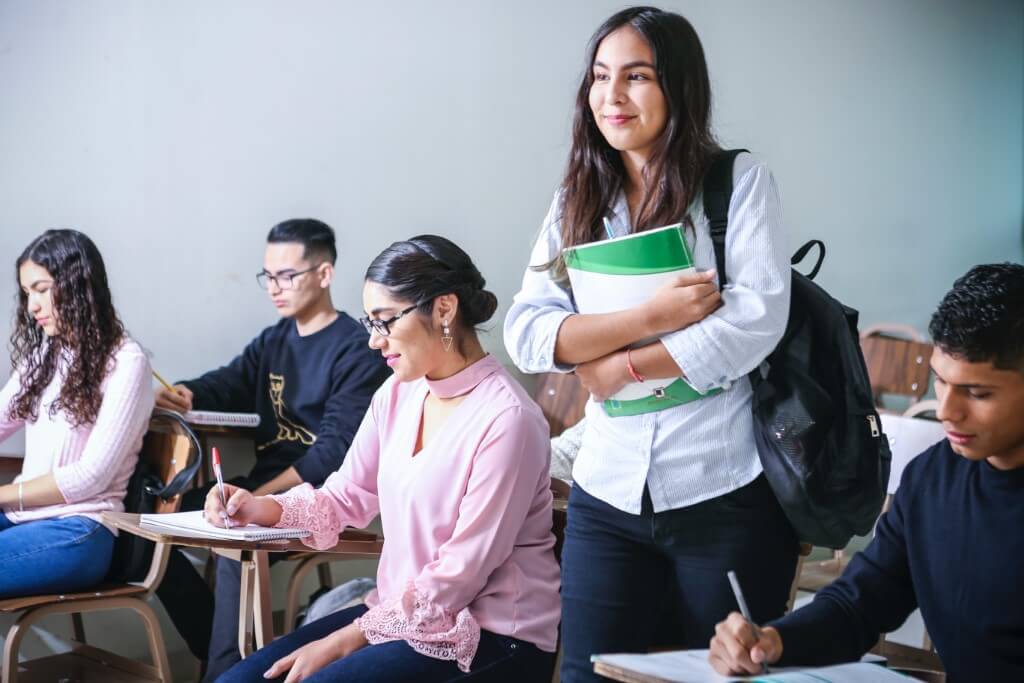The number of times you’ve started learning something new but then stopped when you realised you weren’t making any headway is up there. Don’t beat yourself up if that’s the case; learning something new isn’t easy. Due to widespread amnesia, schooling has become a frustrating ordeal.
You have found the ideal location if you want to learn but are having trouble doing so. Dozens of methods for rapid knowledge acquisition are included in this article.
Learn the skills you need to excel in your studies
What’s taking you so long?
In this article, we will discuss the three main reasons why many people have difficulty learning new material quickly, based on years of observation in academia and the business world. Inquire into whether you suffer from any of the following learning difficulties.
1) In other words, take things carefully at first. The best way to start learning something new is to just dive in
You may have been curious about chess but unsure about where to start. If you didn’t know the optimal way to play a 2-player strategy game, you either didn’t try to learn it at all, or you learned it indirectly, through sources like books, movies, and friends and family.
This disjointed method makes it hard to zero down on anything specific and often results in competing recommendations.
You shouldn’t always put too much stock in the knowledge you get from books and people you know. It’s possible that your pals haven’t heard of chess-tutoring websites.
2) Have trouble remembering things
What are your recollections of your time spent at school? You probably forget all you were ever taught in a matter of days, if not minutes.
At work, this problem has remained. How often do you find that half the people at a meeting forget what was discussed?
There is a decline in older people’s willingness to attempt new things as a result of their own personal experiences.
3. Fight to put learned skills to use
It’s a prevalent cause of educational failure. All they do is read books and never put what they learn into action.
Using the metaphor of learning to ride a bike is a great way to
Usually an older brother or parent would show you the ropes. Learning begins with that first bike ride.
Learning the fundamentals of bicycle handling is not difficult. No matter how many tutorial videos you watch, though, you won’t get better at anything unless you really put in some work.
4. Be intimidated by difficult reading
Selecting an unsuitable instructor or course could hinder your educational progress. Particularly if the first thing they do is something extremely difficult.
Think about learning a new language.
If your teacher spent weeks merely explaining grammar rules, you might as well stop attending class. If they made learning a foreign language interesting and exciting, you would keep at it and gain self-assurance. Vocabulary and grammar will be acquired over time.
5. You are unable to acquire a new skill despite extensive effort
No amount of study or review can guarantee success.
This is a typical issue.
Unfortunately, many people make matters worse by engaging in even more practise. Time and effort alone won’t be enough if you don’t have a good strategy for learning.
Techniques exist that facilitate rapid knowledge acquisition. One term for this is “smart learning.” Explore its nature and potential applications in the here and now.
Respect the variety of instructional approaches
The way people learn is diverse. There are those that learn best by reading, while others need to have everything spelt out for them.
While Vanderbilt University acknowledges over 70 distinct learning styles, only four are considered essential.
1)A Visual Approach to Instruction
Visual learners benefit from movies and presentations that include visuals like charts and graphs.
They learn best through seeing and doing (e.g. through photos, video or PowerPoint presentations).
2) In the Hearing Sense, Auditory Learning Style
Auditory learners benefit most from lectures and audiobooks. It is not hard for these students to hear.
They learn best through listening (e.g. through podcasts and audiobooks).
3) Learning Style Reading or Writing
Reading/writing Literacy and writing are popular activities among students. What they read and write sticks in their minds.
These children benefit greatly from reading and writing (e.g. through books, magazines and websites).
4) Kinesthetic learners put theory into practise through active exploration and experimentation.
Those who learn best through movement are called kinesthetic learners.
They are the kind of pupils who actively participate in class (e.g. starting to learn to drive by getting behind the wheel).
Learning Stages and How to Understand them
The process of learning consists of three phases: Since the moment of our birth, we’ve been absorbing knowledge. Perhaps we’ve employed one of the three learning tiers without even realising it. A student progresses through these three levels of learning:
STAGE 1: COGNITIVE LEARNING
Students are actively engaged in this type of education. In the case of a student learning dance, for instance, the tutor’s support is essential and continuing.
STAGE 2: ASSOCIATIVE LEARNING
This form of learning takes place whenever our brains are conditioned to associate two stimuli that are otherwise unrelated (e.g., thoughts, behaviours, sights, and sounds). The young dancer is finally starting to get the hang of things and put on shows regularly.
STAGE 3: AUTOMATIC LEARNING
Students are free to learn on their own time and in their own way, without the oversight of adults.
The previously inconsistent and inaccurate dancer has shown remarkable improvement. As a result, they have the ability to focus and adjust to novel circumstances.
Your ability to learn and master new material will greatly benefit from reading this article because it will help you better understand the learning phases and where you are in that process.
Active-Learning
After deciding what to learn, settling on a preferred learning strategy, and being familiar with the many phases of education, you are ready to engage in active learning.
If you want to learn things quickly and effectively, you should combine the two.
The following is an illustration of this in action:
You hope to pursue drumming as a hobby, a profession, or both.
Whether you take lessons from a professional or learn on your own using books and videos, you’ll still need a drum set to practise and improve. This supply set is convenient for storing at home or at a regular practise site.
Whether you want to learn to play the drums, write computer code, or swim, combining theory with practise is the fastest way to get better.
Today, a lot of people get their education on their own time by watching videos on YouTube and taking classes online. It’s easier to come by and cheaper. You’re not limited to attending classes at specific times and places, but rather can study whenever is most convenient for you.
You can get an education without sacrificing your time at work or with friends.
Using the information in this article, you should be able to launch successfully into distance education.
Having a study buddy can keep you on track if you’re self-studying. Get some practise in with some native Spanish speakers before enrolling in an online course.
Learning more in less time, and how to achieve it
Digital Brain
Did you realize that you actually have a “backup brain?” Computed Brain. I’ll define “Digital Brain” for those of you who aren’t familiar with the phrase.
Digital brains are programmes or applications that can store and swiftly retrieve large amounts of data.
Popular Digital Brain resources include:
- Airtable
- Microsoft OneNote Apple Notes Evernote
- In Google’s Digital Wallet
If you’re trying to learn something new, but finding it difficult to commit the information to memory, you may want to consider using a digital memory device, or “Digital Brain,” instead. Instead of attempting to memorise the weather forecast for the week, check your phone, tablet, or computer.
Learn how to make more room in your head for information storage, processing, and original thought with the help of this article.
Spaced repetition and time between instances
Spaced repetition is explained in detail in this article. The more exposure you have to anything, the less often you’ll need to go back and look it over. Easy? True.
The concept of spaced repetition explains when and how you should practise anything to fully internalise it. This method has served me well for a very long time.
Spaced repetition procedures:
- Read over your notes as soon as possible after getting them. Read over your notes and focus on recalling the most crucial information for the upcoming test.
- Try to remember everything without your notes after a day has passed. Just by walking or otherwise unwinding, you may find it easier to recall the details.
- Do this for several days at intervals of 24 to 36 hours. Things like this can be accomplished while waiting for a coffee or walking the dog. Use your notes as a reference, if necessary.
- Take another look at the material a few days later. This helps your brain to reprocess information and solidify what you’ve already learned.
Learning is boosted by spaced repetition. From my perspective, it determines whether or not an endeavour succeeds.
Deliberate exercise
One way to become proficient at something is by “deliberate practise,” or focused, focused effort. Redundant reiteration is avoided with this technique.
Make an effort to start a podcast. In order to improve in broadcasting, you need to practise systematically splitting your abilities into smaller and smaller chunks.
Possible need for technical specifics. Next, you should focus on the quality of your material and how you offer it. If you want more listeners for your podcast, you’ll need to learn some marketing fundamentals.
You would be overwhelmed and lose interest in learning if you tried to do so all at once. If you commit to learning something new every day, you may find podcasting success more rapidly.
You can apply Deliberate Practice to your learning by performing the following:
- Break the data down into manageable chunks.
- Do not neglect your education.
- Seek the advice of an expert.
- Incorporate feedback into your daily routine.
There is no better way to boost knowledge retention and recall than via deliberate practise. As a matter of fact, I’ve been using it for quite some time.
Use a Feedback Loop to Seek Opinions
One of the most efficient methods to learn and improve upon any skill is through the use of a method called a “Feedback Loop.” If a student is given feedback on their performance, they might utilise it to alter their approach to studying.
There are three stages to a feedback loop.
- Put what you’ve learned into action by practising.
- Here is where you’ll measure up against the standards you set for yourself. Most students either don’t bother with this level or do poorly in it.
- It’s important to take stock of your progress, identify areas for improvement, and then recommit to the process.
It is easier to learn with feedback loops in place. It could help you get through your learning barriers.
Brain-boosting supplements
Vitamins with certain properties have been demonstrated to boost cognitive function.
Now, let’s have a look at some dietary supplements.
Ginseng, or Panax, is a plant that has been used medicinal
Herbal medicine has been used for hundreds of years in Asia and the United States. Stress and mental fog are lessened by herbal medicine, making it easier to focus and remember things. All of Asia, including China and Korea, uses the same word for ginseng. As a nutritional supplement, it is easily available.
Fatty acids, omega-3 (Omega 3)
Among their many functions, amino acids contribute to the body’s ability to maintain a healthy energy balance and proper muscle mass. L-Tyrosine improves mental performance because it reduces stress responses in the body and the brain.
DHA and EPA are two types of omega-3 fats. Fish oil capsules contain these (vegans can choose algae oil as an alternative).
Brain inflammation is reduced and new cells are grown when DHA and EPA are present. A DHA/EPA supplement can help you remember more, react faster, and solve problems quicker.
Polypeptides and Amino Acids
Among their many functions, amino acids contribute to the body’s ability to maintain a healthy energy balance and proper muscle mass. L-Tyrosine improves mental performance because it reduces stress responses in the body and the brain.
Since the body readily absorbs L-Tyrosine, just a small quantity is necessary. Additionally, acetyl-L-carnitine could be an option. Studies have shown that taking acetyl-L-carnitine can make you feel more awake and focused. Alzheimer’s disease and other forms of mild dementia may be helped by this.
Gingko Biloba
By increasing oxygen and nutrients to the brain, herbal medicine is able to enhance mental performance.
You should expect enhanced mental clarity, focus, and memory after taking this plant. One study suggests it may also help slow the effects of ageing on the brain.
Speed reading, often known as rapid reading
The vast majority of us devote numerous hours daily to reading, either digitally or traditionally. Those who have a hard time reading will have a slower rate of learning.
There are proven strategies for improving reading speed and retention.
Attempt the following methods:
Quit arguing with yourself
One of the most typical reading phenomena is inner monologue, also known as subvocalization. It’s as if you were speaking the words out loud to yourself. It’s the biggest barrier to reading quickly.
Keep in mind that the rate at which you can read and the rate at which you can speak are roughly the same (around 300 words per minute). When reading, most people mentally read aloud to themselves. If you want to read more quickly, break this tendency.
Realize that you can get the gist of what you’re reading without verbalising every word. See. Though your reading speed will increase, your brain will retain all the information it takes in.
Review the most important points first
If you’re reading a self-help book or doing online research, skim the content first. Examining the abstract, table of contents, introductory paragraph, first paragraph of the first chapter, captions of figures, etc.
This will help you grasp the topic and get ready to read, study, and remember the material. Also, your reading speed will increase.




